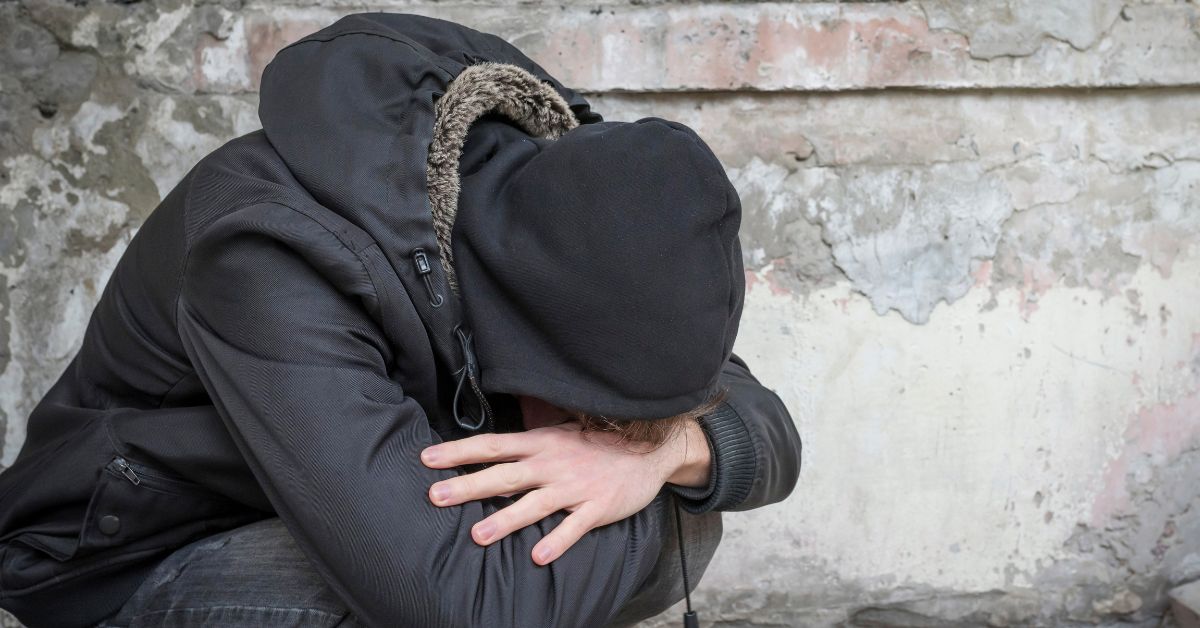We all hope for our young adults to be resilient against life’s tough moments, especially the temptations of drug and alcohol abuse. Opening a dialogue on drug abuse prevention can be daunting, yet it’s an opportunity to positively influence their futures.
It’s essential to start these discussions early and maintain honesty and openness. Together, let’s guide our youth as they find their way, equipping them with the knowledge to make wise choices. Initiating these talks is challenging, but it’s a proactive measure for their well-being and a step towards a healthy adulthood.
Strategies to Prevent Teen Drug Abuse
As we help them make good choices, we should also learn about the four traits that put kids at risk for addiction. Knowing these can help us be even better guides for our kids’ health. Here are several compassionate approaches to guide youth toward healthier choices:
- Open honest conversations: Keep lines of communication clear. You know, when it comes to our young ones, having real talks, the kind where you sit down and actually listen to each other, that’s golden. It’s all about keeping those lines of communication as clear as a mountainstream.
- Positive role modeling: Now, we all know kids have eagle eyes, especially when it comes to watching what adults do. They’re like little copy machines. That’s why it’s so important to be the kind of person you’d want them to be.
- Education on risks: Inform them about the dangers without scare tactics. It’s like when you tell them not to do something, that thing becomes a shiny red button they just gotta push. Instead, talk to them like the smart cookies they are. Give them the straight-up facts about drugs and how they can really mess up a person’s life, health, dreams, and all.
- Involvement in their lives: Stay engaged, and know their world. Being a part of their world doesn’t mean you have to play video games or know all the latest TikTok dances (unless you’re into that), but it does mean showing genuine interest in their passions and worries.
- Encouraging healthy friendships: Foster connections with good influences. Friends can be like sunshine or like weeds in the garden of their lives. Encourage your kids to choose pals who lift them up, who make them laugh, and who have dreams of their own.
Staying on top of these points takes patience, love, and a bit of elbow grease, but the harvest is well worth it. Keep nurturing these practices, and with time, you’ll see the fruits of your labor.
The commitment to their well-being can make all the difference in their world. If someone you know is struggling with substance abuse, explore the various addiction programs available to find the most suitable path for them to recovery.
Community Involvement in Preventing Drug Use Among Youths

Community engagement is critical for youth protection. There are these programs, right in our own backyards, that have been making strides in keeping kids on the straight and narrow. These programs are not just fluffy; they have clear goals and strategies that really connect with young people. Schools, law enforcement, healthcare, and families must work together to create a supportive network.
Schools are the front lines, teaching kids not just their ABCs but also life skills like how to deal with peer pressure. Law enforcement steps in to keep the peace and to make sure there are consequences for those pushing drugs. And let’s not forget healthcare providers who can spot the signs of drug use early and jump in with help.
At the end of the day, what teens really need is to feel like they’re part of something, that they’re understood and have folks in their corner. A community that wraps its arms around its youngsters can make all the difference.
Highlighting the Consequences of Teen Drug Abuse
As parents watching over an adult child grappling with addiction, it’s important to know that you’re not facing this alone. It is equally essential to educate on the potential repercussions of drug use with sincerity and concern:
Health Impacts on Adolescents
The effects of teenage drug use do not discriminate, and its health impact on adolescents can be dire:
- Short-term health consequences: This can occur from trying drugs just once. These risks include accidents, overdose, and unpredictable effects of potent substances. Changes in appetite, sleep disturbances, and mood swings can quickly disrupt a young person’s life.
- Long-term health consequences: Continued use can lead to long-term health problems, such as heart or lung disease. These issues can appear unexpectedly and have lasting effects and withdrawal symptoms.
- Impact on brain development and mental health: The teenage brain is still under construction, and drugs can mess with the wiring. This can lead to difficulties with learning, memory, and self-control, which can derail a young person’s progress in school and life.
Enhancing understanding of grave concerns is important, as it emphasizes that teens may make wise life decisions for future well-being.
GET: The 3 things that actually "allowed" me to help my son (and regain control again)
Social and Academic Consequences
Substance abuse also reverberates through the social fabric of a teen’s life:
- Relationships start to suffer. Friends who don’t use drugs might pull away, feeling unsure of how to help or protect themselves. Family ties can become strained as trust is broken. It’s like a bridge starting to show cracks – it can be mended, but it takes work and time.
- School performance can take a nosedive. Homework gets ignored, grades slip, and sometimes they may even skip classes or drop out. It’s like they’ve lost their map and can’t find the way back to their path.
- Participation in extracurricular activities often declines. The things they used to love, be it sports, arts, or clubs, start to lose their shine. It’s as if the color in their world fades a little bit each day.
It’s crucial to remember that these warnings aren’t meant to scare them straight. These are real-life challenges that kids around the world face every day and may impact them later in life.
Identifying the Signs of Drug Use Among Youth

It’s not always easy to spot the signs, but it’s important to keep our eyes open so we can help our young ones when they might be struggling. Adolescents are particularly vulnerable to the pitfalls of drug abuse, making it crucial for parents and guardians to be vigilant.
Changes in Behavior or Mood Swings
It might worry you to see their moods fluctuating more than usual. If these emotional ups and downs are becoming a common pattern, it could be a hint that it’s time for a caring conversation.
Unexplained Health Issues or Neglect of Personal Hygiene
Seeing a decline in their self-care or an increase in health complaints can be concerning. A noticeable lack of attention to cleanliness or well-being might be a sign they’re dealing with something serious.
UPDATED: Discover the 3 life-changing things about addiction I wish I knew years ago
Shifts in Social Circles and Secretive Actions
Friendship changes happen, but the secrecy around new associations can be troubling. If they’re suddenly very private about their activities, it could be a time to gently offer your support.
Academic or Professional Performance Taking a Nosedive
When their performance in school or at work suffers dramatically, it can be distressing. This isn’t just about a bad day; it’s a potential indicator that they might be struggling with deeper issues.
Missing Money or Valuables, and Finding Drug Paraphernalia
It’s alarming to notice valuables or money disappearing or to find items that could be linked to drug use.
Noticing these signs can be unsettling. They don’t prove drug use, but they are important enough to warrant attention and support. As you consider the steps to protect and help your child, you might contemplate whether to implement a teenage drug testing policy at home. Carefully approach and openly communicate when making this decision. It can be a crucial step in guiding your teenager towards a healthier and safer future.
Rehabilitative Approaches for Youths Recovering from Substance Abuse
Finding the right path to recovery for young people struggling with addictive behavior is a deeply personal journey. It requires understanding, care, and a tailored approach to seek help for their individual needs.
- Inpatient Treatment: They will stay at a facility for a while. Professionals at the facility understand what they are going through. It’s intensive, and it’s all about giving them the tools to cope without the crutch of drugs or alcohol
- Outpatient Treatment: Outpatient treatment is similar to attending a class multiple times a week. You can do the outpatient treatment while living at home.. It’s less disruptive to a teen’s life, allowing them to maintain school attendance and some normalcy.
- Holistic Treatment Plans: Takes a comprehensive approach to address the full spectrum of a teen’s life.
Support systems and post-rehabilitation care are the safety nets that catch them if they stumble. Ensuring a structure of ongoing support is crucial for a sober future.
WATCH: Free, confidential workshop that explains how to "Love Another Way"
We’re Here to Help

So, there you have it. We’ve gone through some difficult discussions together, from the heart-to-heart talks at the kitchen table to the shared community effort that helps guide our young people. We’ve discussed the details of school programs that are reliable and the personalized support that fits well.
But let’s remember, this journey isn’t over; it’s more like a pause to gather strength for what lies ahead.
If you think you might need a little assistance or you have questions about what comes next, don’t hesitate to reach out. We’re here, ready to listen, share some advice, or offer a hand. We’re all in this together.
Frequently Asked Questions About Preventing Drug Abuse Among Youth
How can you influence others to avoid getting involved with drugs?
You can influence others to avoid drugs by being a positive role model, sharing knowledge, and promoting healthy alternatives. Open and honest communication is key; talk about the real-life consequences of using harmful substances, and share stories of people who have overcome addiction.
How can we solve the problem of drug abuse?
Solving the problem of drug abuse requires a comprehensive approach that includes education, treatment, and support systems. We should also provide accessible treatment for those struggling with addiction. Lastly, we must create a supportive community that encourages healthy choices.
NEW: How to make the shift from "Mom Code" to prioritizing your own well-being
How do you prevent drug abuse and raise awareness?
To prevent drug abuse and raise awareness, we must engage in community outreach, and education, and provide resources for prevention. Creating strong support networks can deter individuals from turning to drugs. Offering counseling can also have the same effect.
What are the 3 types of drug prevention and control?
The three types of drug prevention and control are primary, secondary, and tertiary prevention. Primary prevention aims to halt teen drug use through education and community programs. These programs promote drug-free lifestyles and prevent drug use in teens before it starts. Secondary prevention targets at-risk populations to prevent the progression of drug use. Tertiary prevention treats and rehabilitates those affected by drug addiction. It aims to prevent further harm and relapse in individuals.
